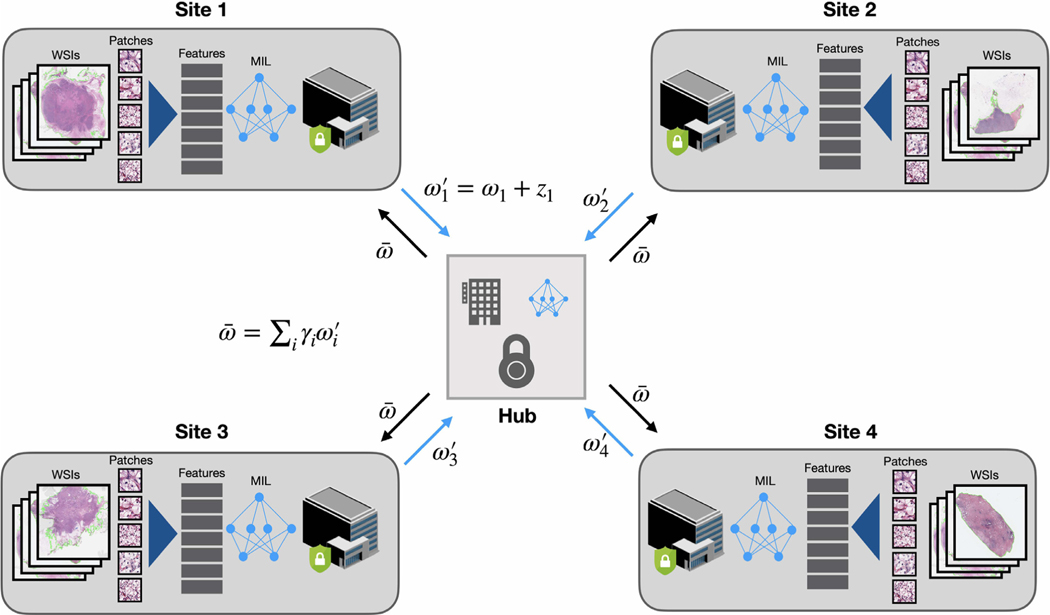Fig. 1.
Overview of the weakly-supervised multiple instance learning in a federated learning framework. At each client site, for each WSI, the tissue regions are first automatically segmented and image patches are extracted from the segmented foreground regions. Then all patches are embedded into a low-dimension feature representation using a pretrained CNN as the encoder. Each client site trains a model using weakly-supervised learning on local data (requires only the slide-level or patient-level labels) and sends the model weights each epoch to a central server. Random noise can be added to the weight parameters before communicating with the central hub for differential privacy preservation. On the central server, the global model is updated by averaging the model weights retrieved from all client sites. After the federated averaging, the updated weights of the global model is then sent to each client model for synchronization prior to starting the next federated round.

